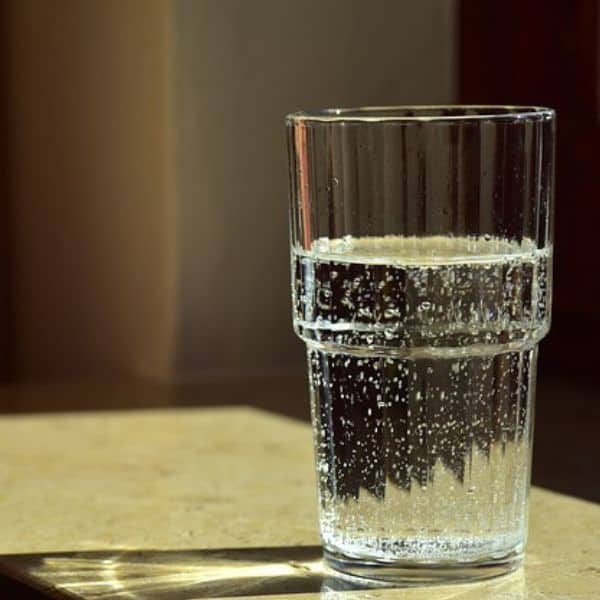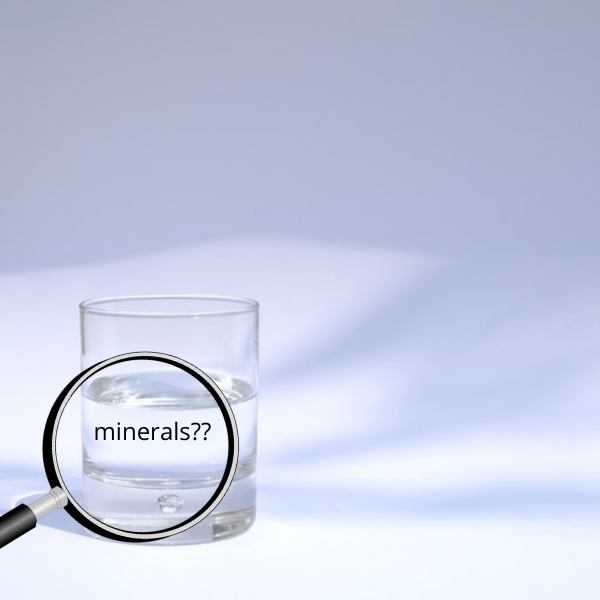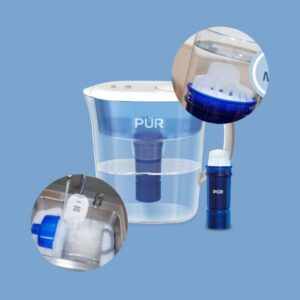What is Reverse Osmosis Water?
Reverse osmosis water is an increasingly popular way of treating and filtering water for drinking, cooking, and other uses. It is a process that utilizes pressure to filter out several different types of contaminants from water. This form of filtration can produce higher-quality drinking water than many methods used in the past.
Reverse osmosis works by forcing water through a semipermeable membrane. Its microscopic pores are designed to block certain molecules from passing through while allowing other molecules to pass through freely.
As the pressurized water passes through the membrane, contaminants like chlorine, lead, nitrates, and sulfates are blocked. Even minerals and essential compounds like sodium chloride or natural salt are removed.
Reverse osmosis also eliminates many harmful bacteria and viruses that can be present in untreated sources of water. The brine that contains all the contaminants goes down the drain while clean water passes into a holding tank ready for use. A tankless RO system like Waterdrop RO system will serve the water straight away to your cup.

What Is The Purpose of Remineralizing Reverse Osmosis Water?
Since it is unhealthy to drink demineralized water, remineralizing reverse osmosis (RO) water would add important minerals back into drinking water. RO systems are becoming increasingly common in households, as these systems can remove up to 99% of contaminants from tap water.
However, the drawback of reverse osmosis is it also strips away essential minerals like calcium and magnesium which are important for our health and well-being. This is where remineralization comes in.
The purpose of remineralizing RO water is to restore the beneficial mineral content that was lost during the filtration process while still maintaining the great taste and quality of the drinking water.
Remineralized RO water not only provides us with a number of essential trace minerals, but it also helps improve pH balance, promotes healthy hydration levels, and enhances general overall health.
What Kinds of Minerals Does a Reverse Osmosis Water Remove?
The reverse osmosis process involves pushing water molecules through a semi-permeable membrane, which blocks certain particles from passing through. RO is an effective way of removing minerals from drinking water, and it can be used for both residential and commercial purposes.
So what kind of minerals does reverse osmosis remove? It’s able to filter out most organic matter, such as heavy metals like lead, arsenic, chromium, fluoride, and radium; along with nitrates and sulfates found in the water supply. It also removes bacteria, viruses, and some chemicals from the source water supply. The end result is pure water that tastes better than tap or bottled water.
However, Ro systems remove healthy trace minerals as well including calcium, magnesium, and potassium. The result is demineralized water which is unhealthy. For this reason, it’s recommended to add minerals back into the water after it has been filtered. You should also consider pros and cons of a reverse osmosis system before buying one.
Does an RO system Remove Both Beneficial & Harmful Minerals?
An RO system or reverse osmosis water filtration system can remove harmful contaminants from your potable water. The question arises: Does a reverse osmosis system remove both good and bad minerals? The answer is yes; reverse osmosis systems are designed to eliminate all types of contaminants, including both beneficial and harmful minerals.
RO systems work by forcing water through a membrane with tiny pores, which allows only the purest molecules to pass through and be collected in a storage tank for drinking. All other particles – including beneficial minerals like calcium and magnesium as well as harmful substances like lead or arsenic – are removed from the filtered water before it reaches the storage tank. This makes it an effective way to ensure you have clean water without sacrificing any essential nutrients found in naturally occurring minerals.

How to Remineralize Reverse Osmosis Water?
Wondering how to remineralize RO water? Remineralizing reverse osmosis water is an important part of ensuring your drinking water is healthy and safe to consume. All RO systems remove most contaminants from water, but even the best RO water system also strips out essential minerals. Without these minerals, filtered water can taste flat and lack health benefits. Fortunately, remineralization is a relatively simple process that can be completed with relative ease.
Purchasing Mineral Supplements
The first option you can do to remineralize water from your RO system is to purchase a balanced mineral supplement designed for drinking water. This type of product generally comes in liquid or powder form and contains all the essential minerals needed for human consumption.
The next step is to mix the supplement into your RO water based on manufacturer instructions; this will ensure that you are adding the correct amount of minerals without overdoing it.
Adding Mineral-Rich Salt
The addition of mineral-rich salt such as Himalayan salt is another way to remineralize your RO water. This method is often called ionizing, which simply means adding minerals to the water via a salt solution.
Besides sodium chloride, it contains trace minerals such as calcium, magnesium, and potassium. Unfortunately, you cannot replace Himalayan salt with table salt or rock salt as the latter mostly contains sodium chloride, with no healthy minerals present.
To begin, you will need to purchase Himalayan salt designed for use in water ionization. There are many brands of Himalayan salt on the market, so be sure to choose one that uses natural minerals and is free from any additives.
Once you have purchased your Himalayan salt, you will need the means to mix it with the RO water. You can do this manually by adding drops of the salt solution to the RO water or using a specialized machine that is designed for this.
The ionizing process will help remineralize RO water naturally replenishing the minerals removed by the RO filtration process.
Buying a Remineralization Filter
One of the most common ways to remineralize RO water is by using a filtration device in your existing RO system. These devices are typically installed in line with your current tap or faucet and are usually much easier to use than other methods. They are also very simple to install, so you don’t have to worry about hiring a plumber.
Using an Alkaline Water Pitcher
Alkaline water pitchers are also a great way to remineralize RO water. These devices use filters that are filled with minerals and electrolytes, which help to add the essential nutrients back into your water.
This is done by running the water through the filters, which results in alkaline water. Alkaline water is also known to have a higher pH scale than regular tap water, which means that it can help neutralize acidity within your body. What’s more, you get to enjoy an improved water taste.
Adding Green Powder
Another way to remineralize RO water is by adding the green powder to it. Green powders are filled with minerals that can help to alkalize your water, and they also make it taste great. Green powders can be purchased from your local health food store, and they are made with high-quality ingredients.
Mixing Mineral Drops
Another option to remineralize RO pure water is to purchase mineral drops. Mineral drops are also filled with minerals and are great for alkalizing your water. You can add mineral drops to any type of bottled or tap water that you have.
As with any method of water treatment, you should test your RO water before and after adding the trace mineral drops to ensure that it is safe for use.

Benefits of Remineralizing RO Water
Remineralization adds back essential minerals that are lost during the RO process which improves the taste, odor, and mouthfeel of the water. It also provides additional health benefits to those who consume it regularly.
- One of the primary benefits of remineralized RO water is improved flavor and taste. When essential minerals like calcium, magnesium, potassium, and iron are added to RO water they improve its flavor profile by making it less acidic and giving it a slightly sweet aftertaste. This makes it much more enjoyable to drink than plain distilled or RO water.
- Additionally, adding these minerals can reduce any off-flavors caused by certain chemical compounds in the original source water.
- Another benefit of adding minerals to RO water is that you can use it as a low-cost, healthy alternative to bottled mineral water.
What Is The Difference Between Natural & Artificial Mineralization?
Natural mineralization levels are determined by the source water quality and the RO membrane process. The mineralized water produced by a natural process can have low to moderate levels of minerals. The typical mineralization levels in naturally mineralized water are:
Magnesium (Mg) – 8 to 15 ppm
Calcium (Ca) – 10 to 20 ppm
Sodium (Na) – 30 to 70 ppm
Chloride (Cl) – 50 to 100 ppm
Potassium (K) – 5 to 10 ppm
The mineralization process is the same for both natural and artificial mineralization. However, the amount of minerals added during artificial mineralization is regulated by an electronic control unit that determines the number of minerals needed based on the incoming water quality.
Final Word
The reverse osmosis process is a way to remove dissolved solids from water. This process pushes water through a semi-permeable membrane, which allows water molecules to pass through while blocking larger particles including salt.
However, this process also removes natural minerals from the water that are essential for human health. To replace these important minerals, it is necessary to remineralize RO water using a process known as artificial mineralization. Now you can drink water with all the minerals your body needs.

